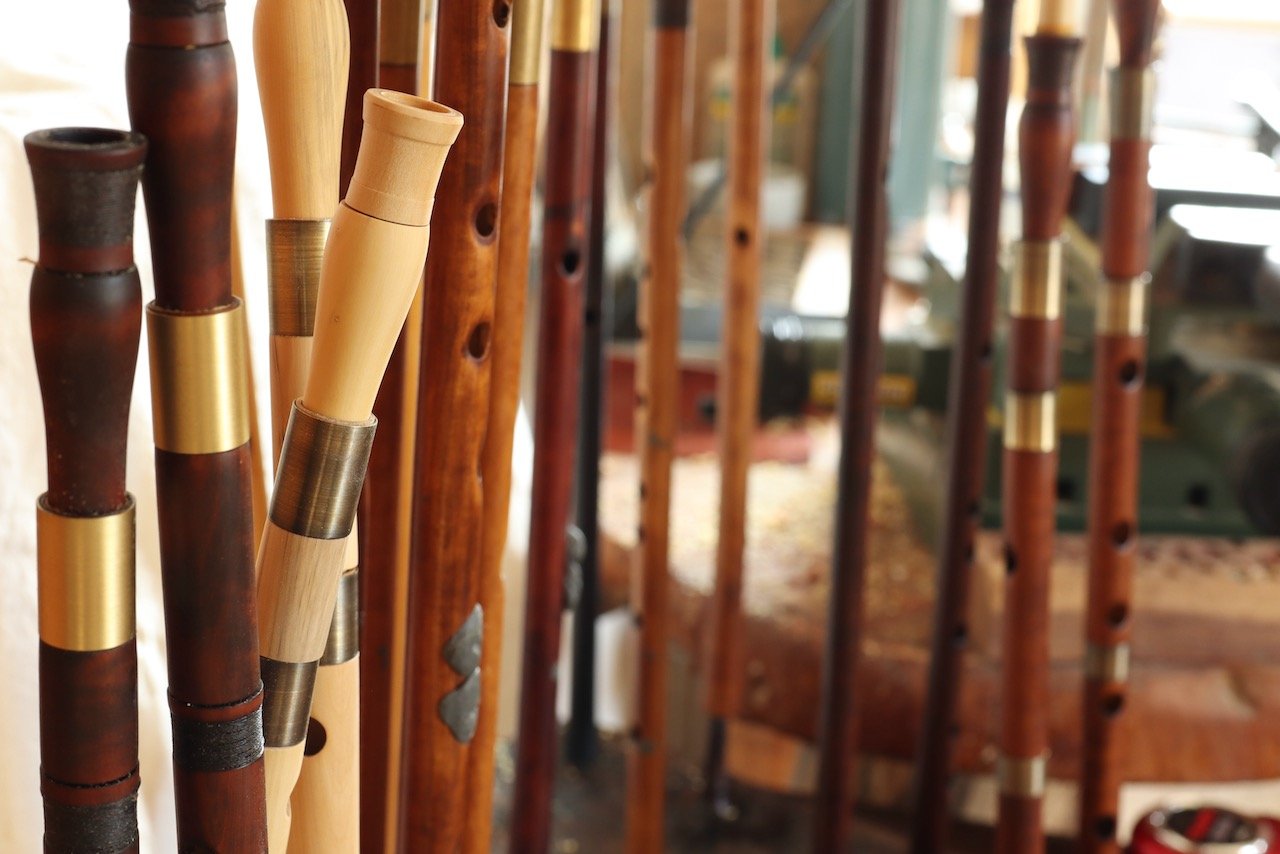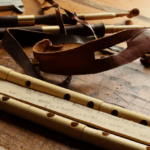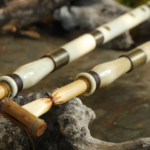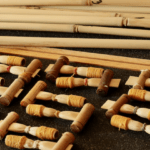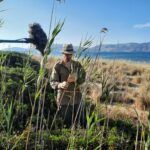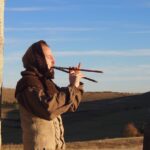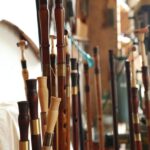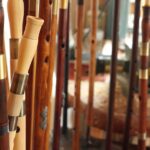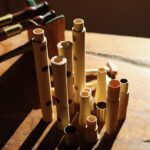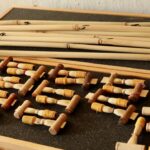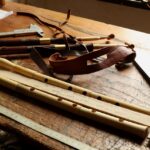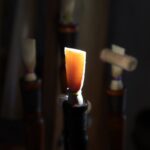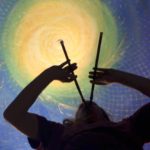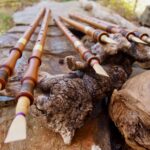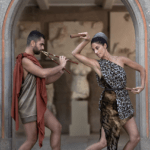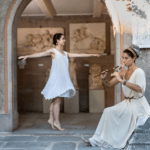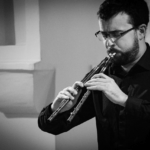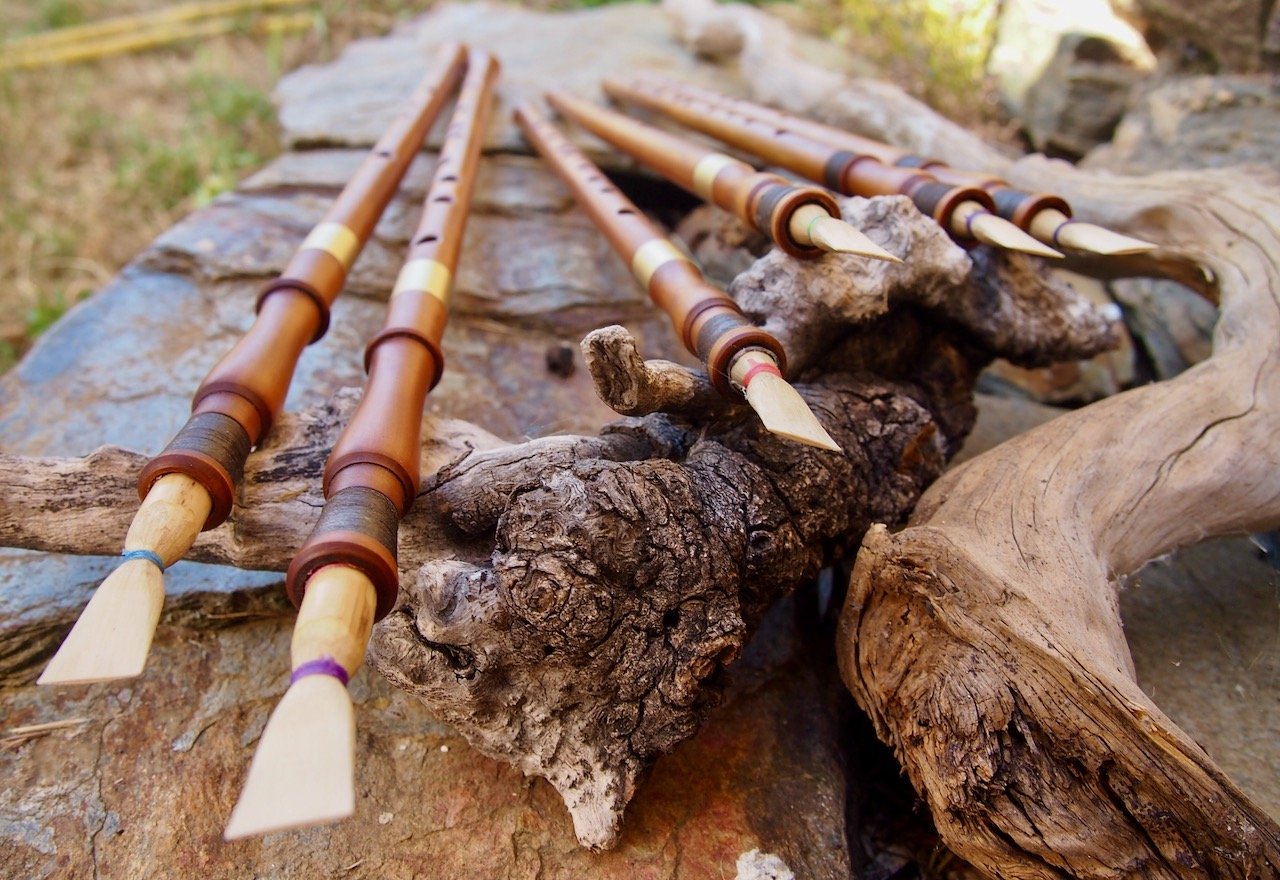
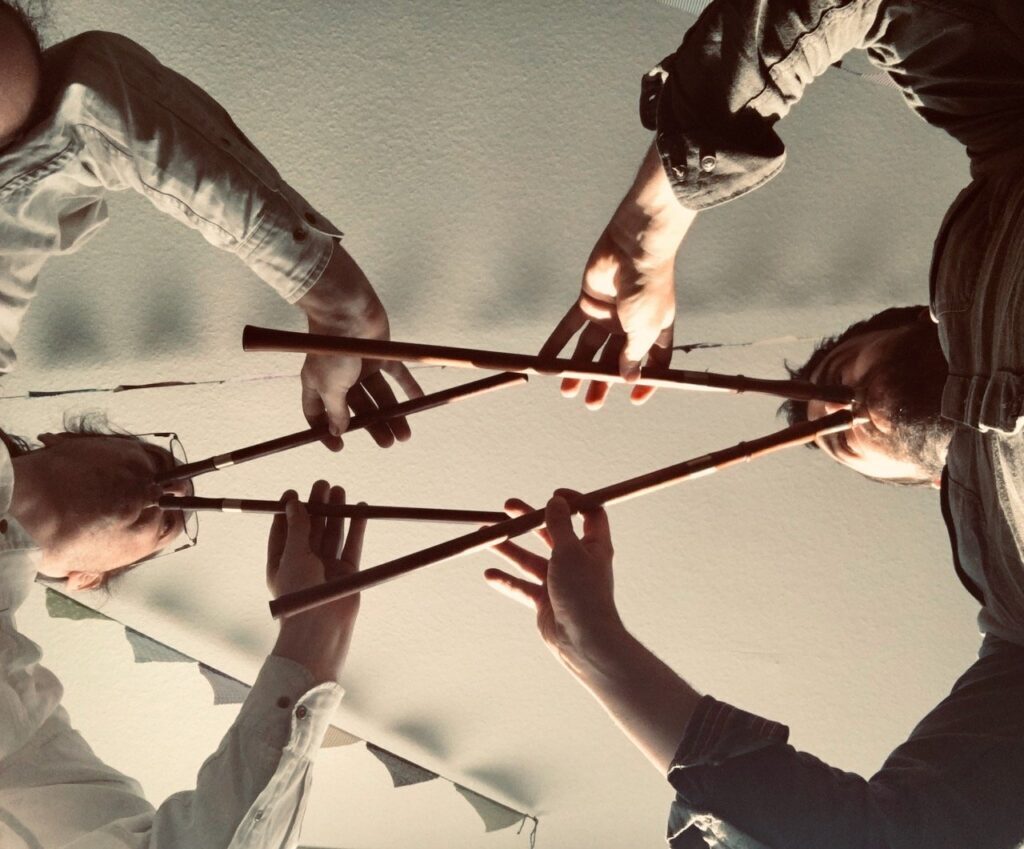
The aulos, the sound of the two music tubes, enchants the listener and the player at the same time. It is known from antique vases; you can see the Aulet holding and playing two tubes like a V.
Only in recent years have these instruments been made to sound again.
Double reed instruments already existed in Ancient Egypt under the name Memet. The Etruscans called the corresponding instruments Subulo. In ancient Rome, the type of instrument was called a tibia. They can be seen as the direct forerunners of the instruments that are still widespread in the Middle East and the Mediterranean today. (Sipsi, Mijwiz and Launeddas).
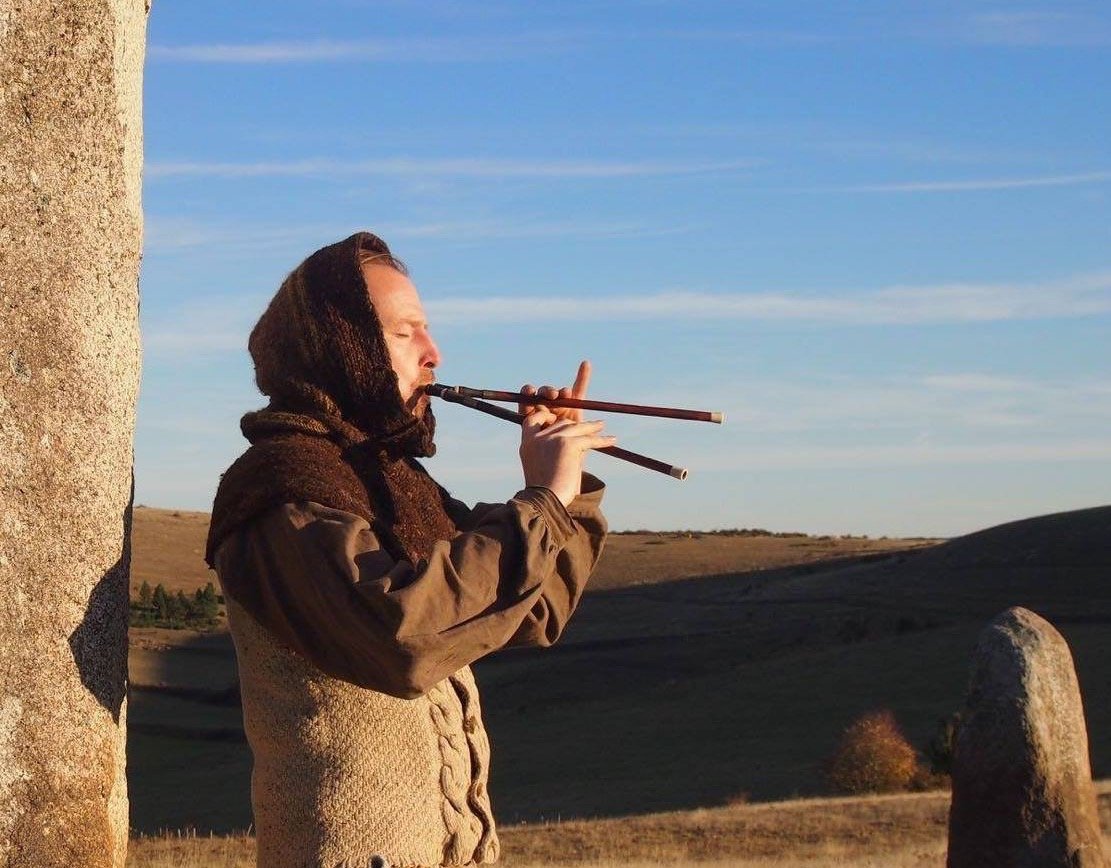
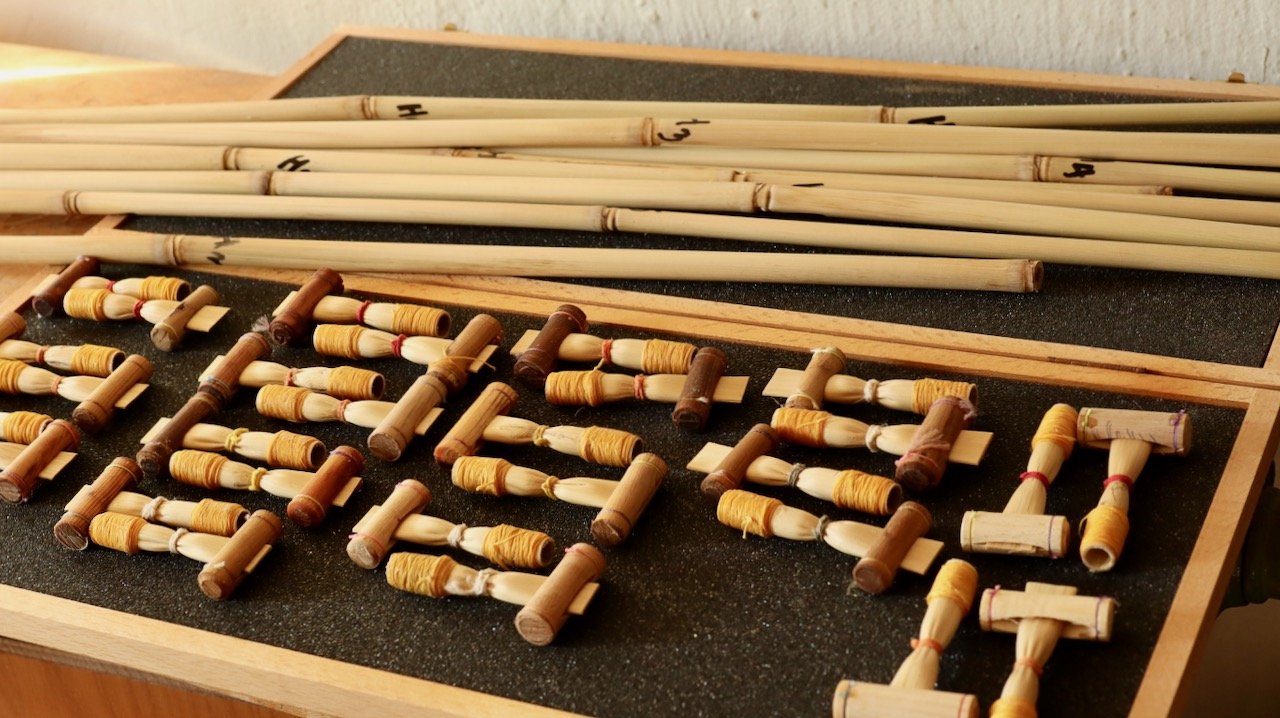
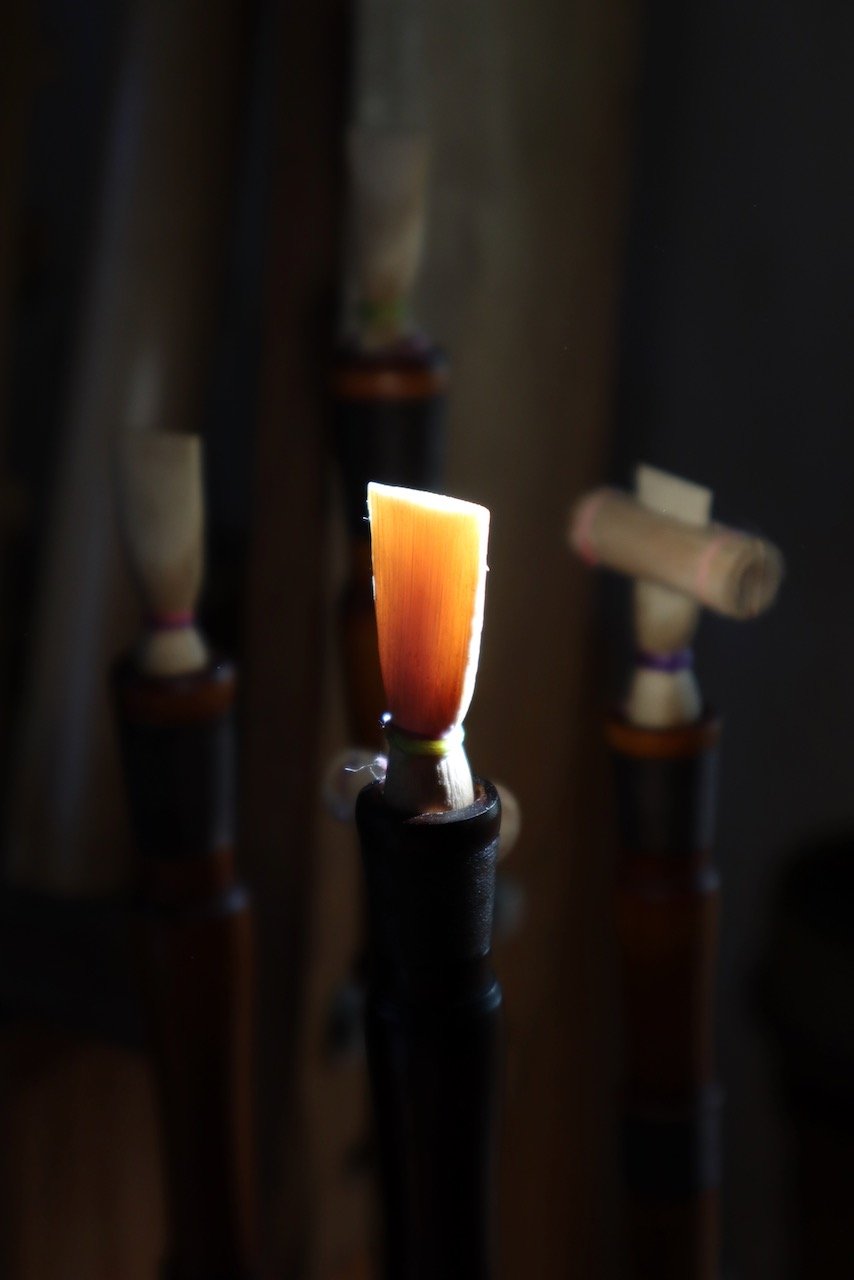
The instruments I make have double reeds made of reed (Phragmites australis), similar to the oboe, bassoon or duduk. They enable very fine "lip-directed" playing, as is known from the instruments mentioned above. You can get amazing timbres and dynamics from the Auloi.
I deliberately do not use plastic reeds because they do not meet my demands in terms of sound and dynamics.
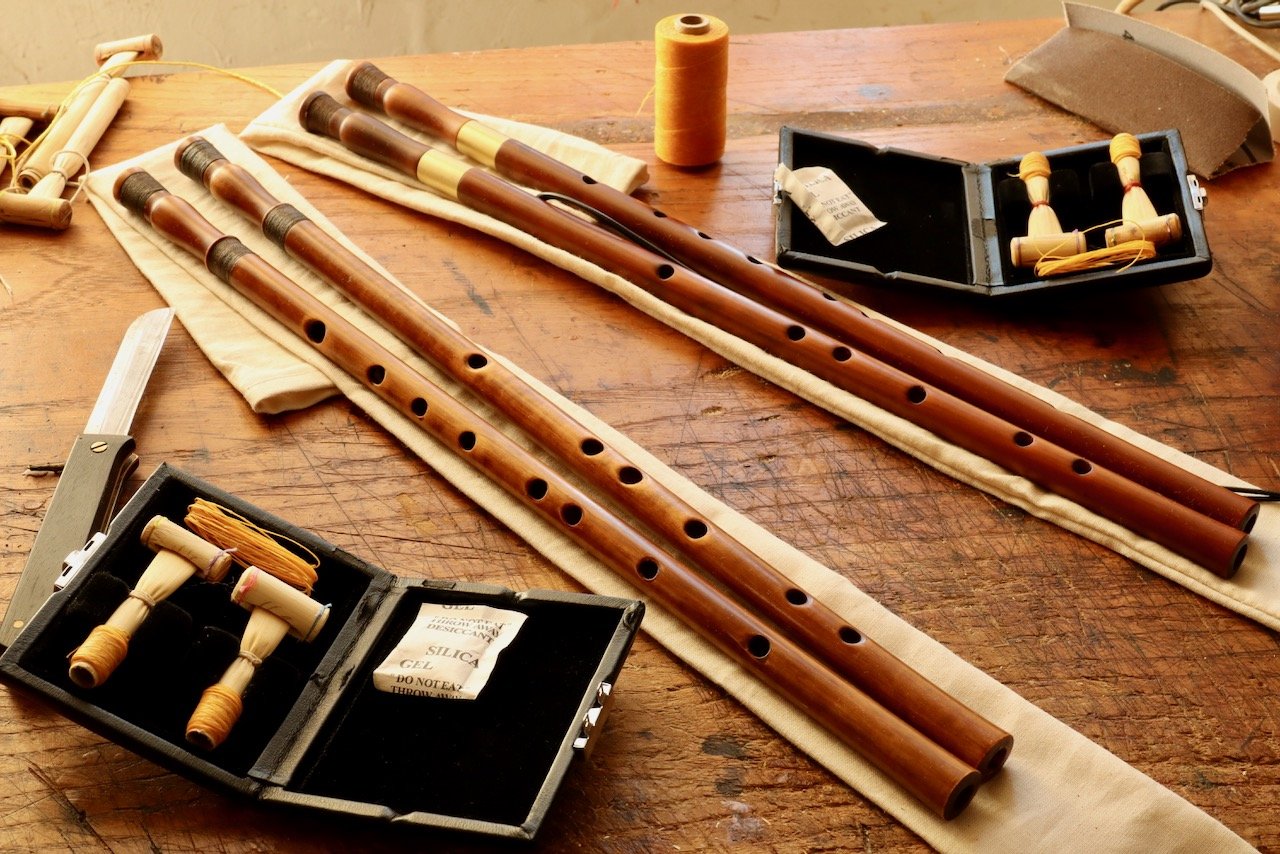
I make the instruments themselves from wood, preferably dark stained boxwood.
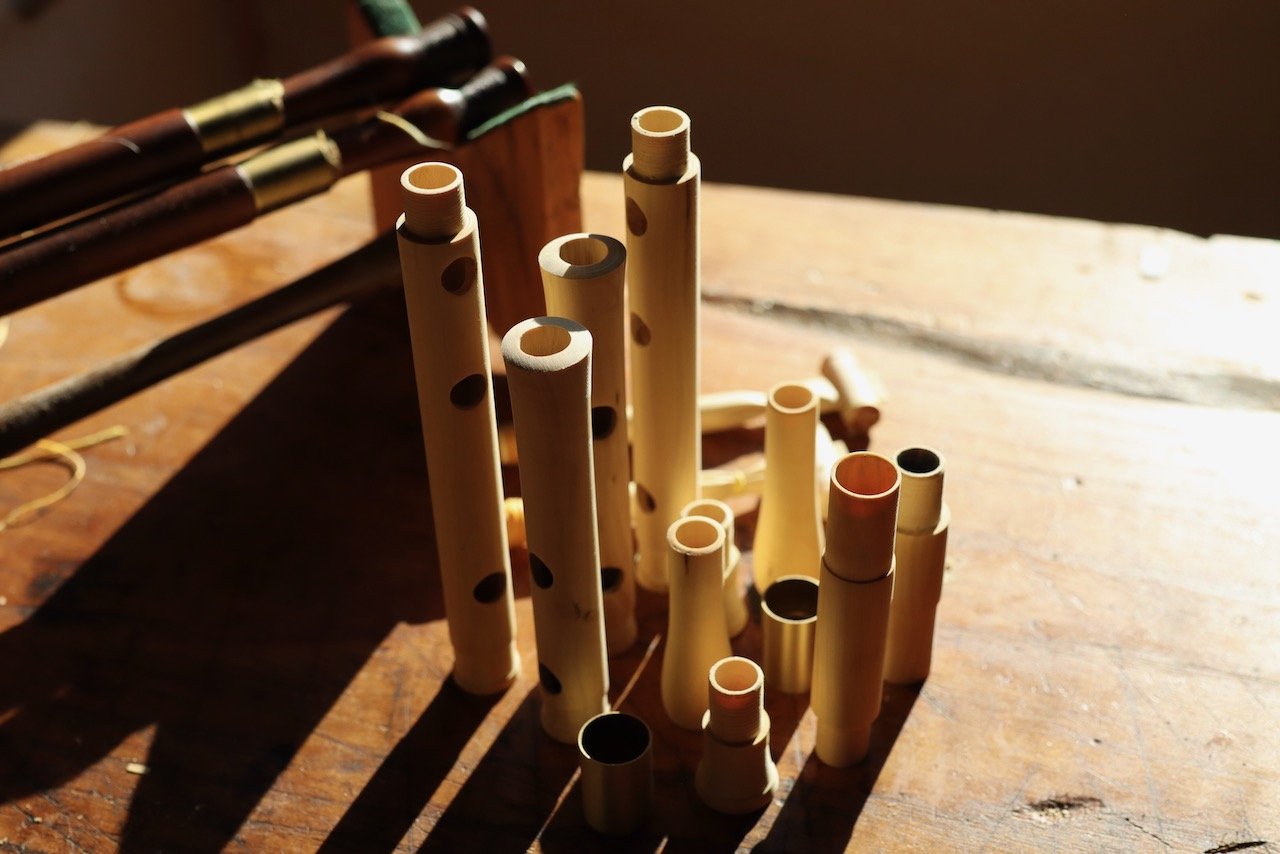
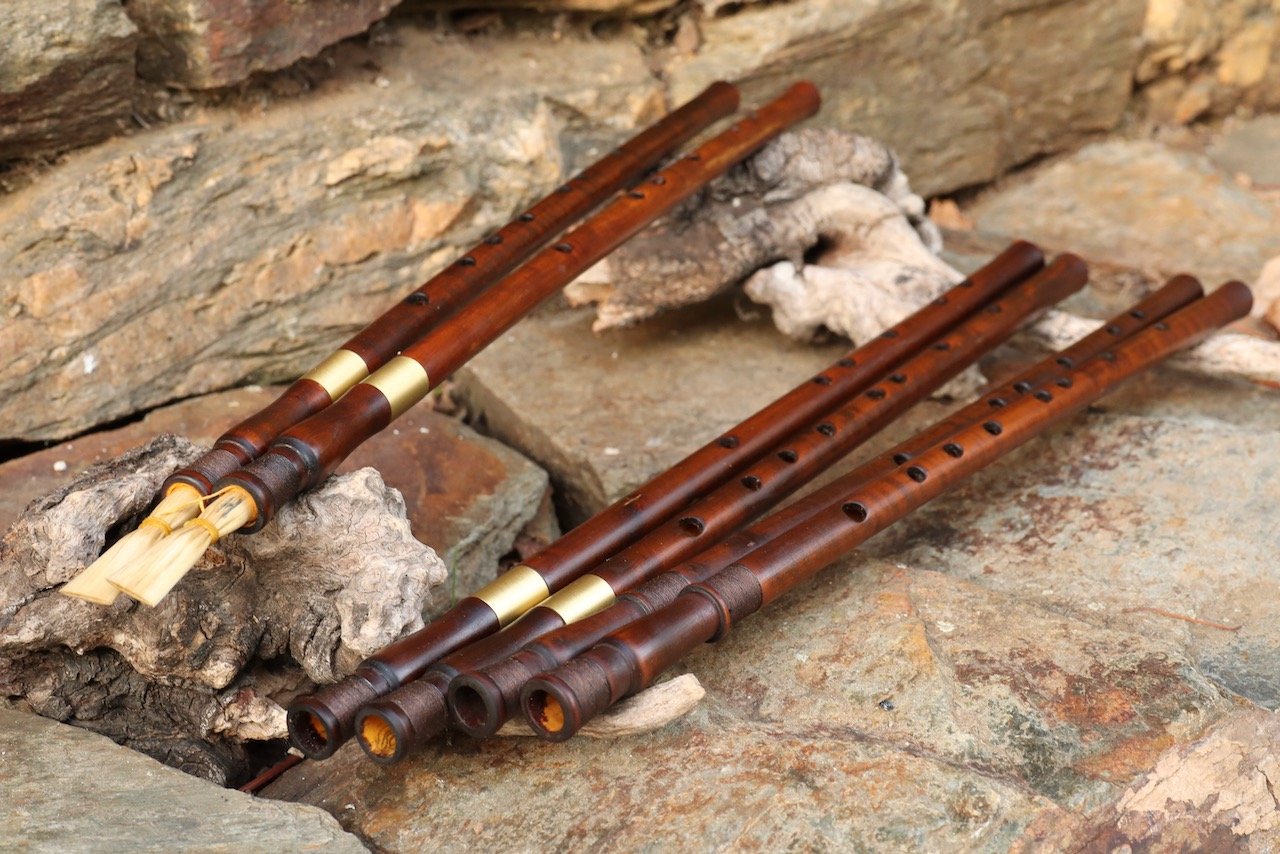
Louvre Aulos
The Louvre Aulos is based on the Aulos found in Alexandria in the collection of the Louvre, Paris. The finger hole dimensions and diagram are the same as the original. The result is an ergonomic shape for playing with five fingers each, the deeper tube in the right hand.
The top five holes were probably the playing holes, the holes below are used to set the fundamental tones. So the two tubes are a quart apart.
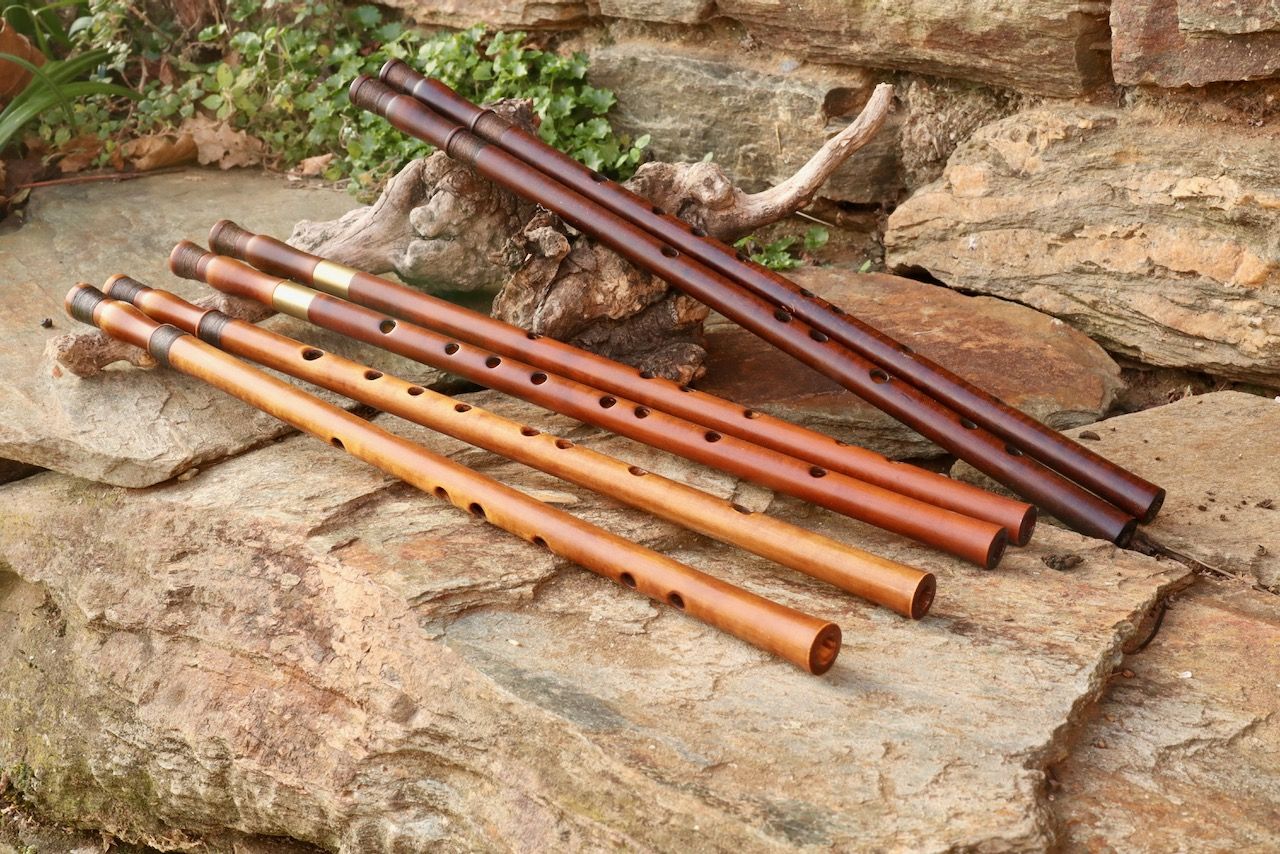
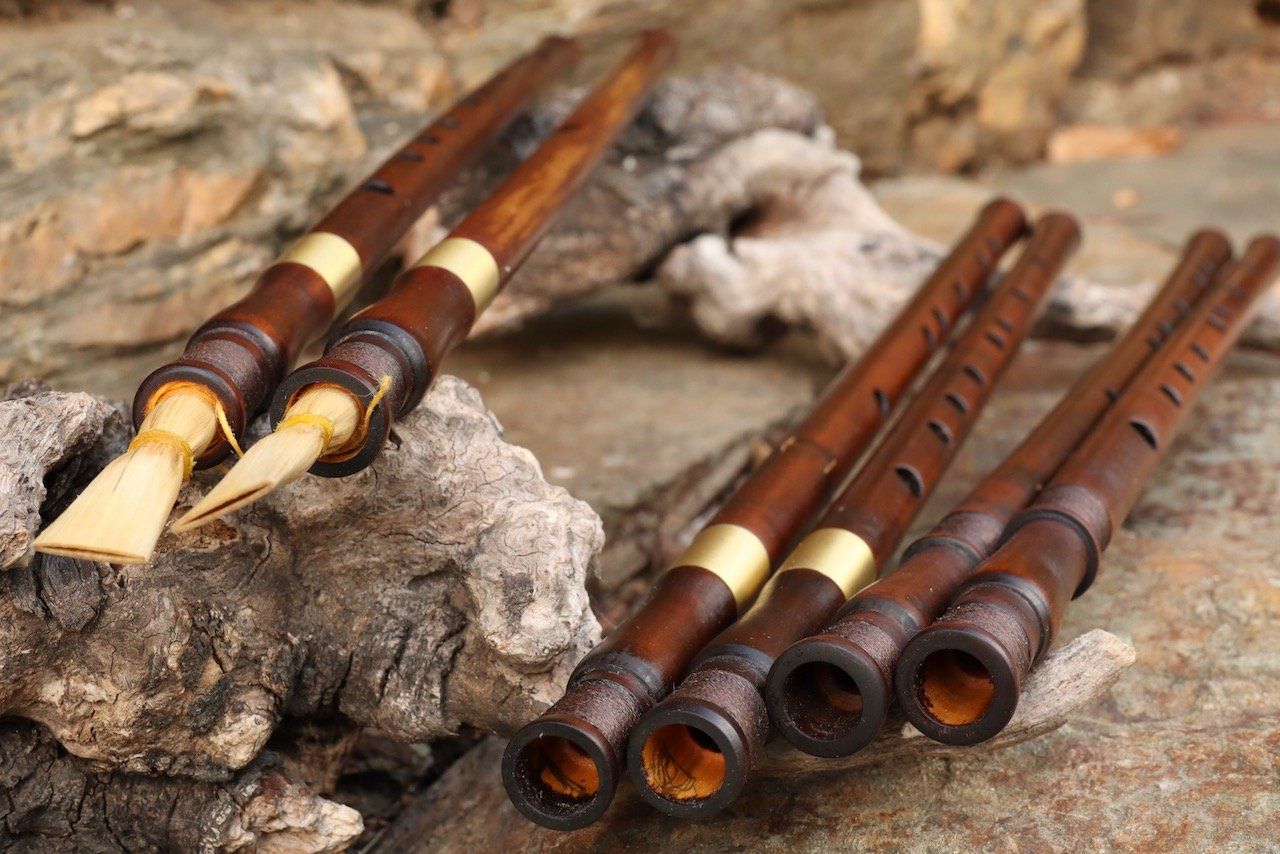

One version closely follows the original, made of one piece with bindings on the reed seat. I added a second binding in a place that many found instruments had cracked. The bindings prevent the wood from cracking.
The second version has a metal ring to reinforce the wood ; the part with the reed seat and bulb sits in it and can be turned or taken of. This can be very practical to bring the reeds easily into position for playing. The main tube gets by this ring another protection to prevent cracks.
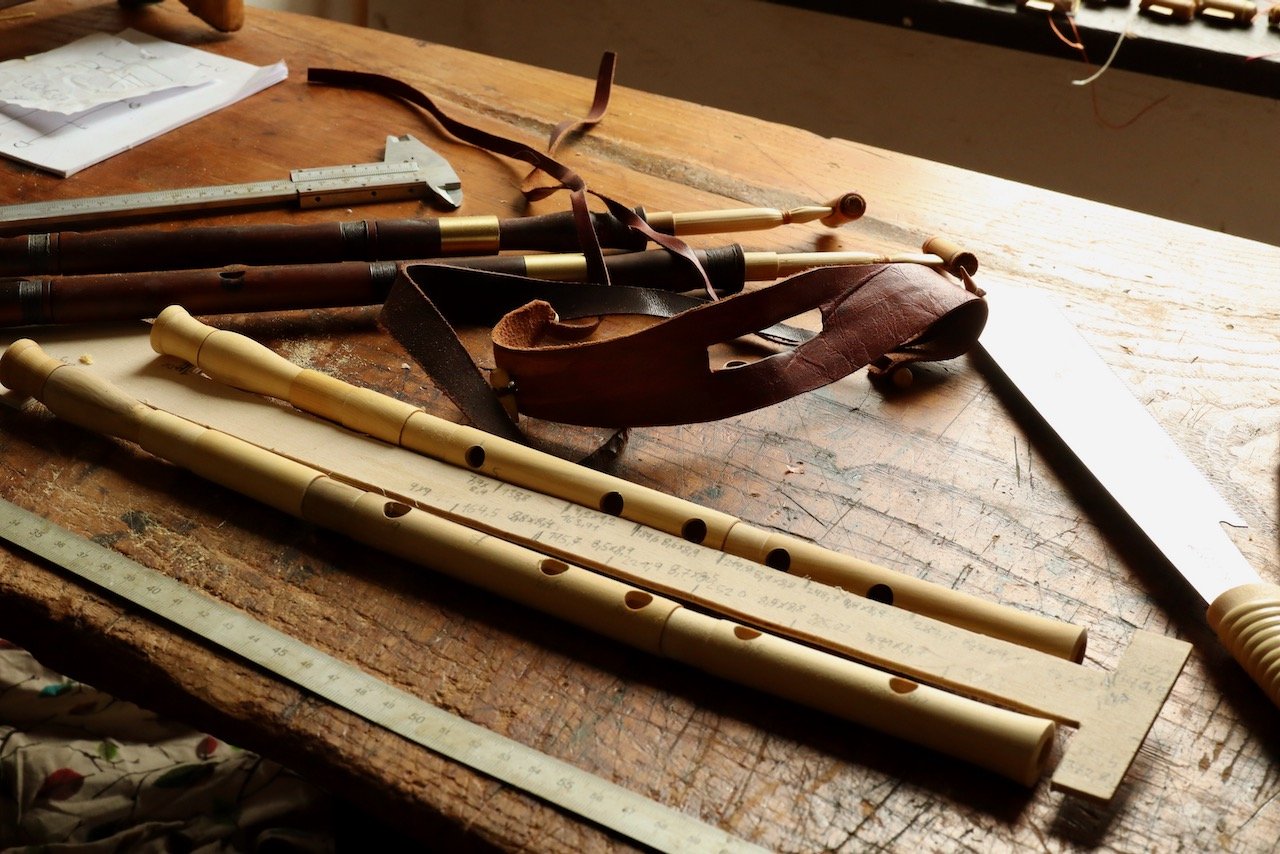
The sound is fuller and more powerful than that of the Louvre Aulos. The lower tube was probably played in the left hand and is tuned one tone lower. In contrast to the Louvre Aulos, it is less intuitive to play. Knowledge of ancient Greek harmonies is helpful. Playing requires advanced blowing technique.
Pydna Aulos
The Pydna Aulos was found during excavations in 1996 and is one of the few instruments that has been preserved completely as a pair. The burial site at Pydna, south of Thessaloniki, dates back to the first half of the 4th century BC. Dated.
I build the reconstruction out of boxwood, either as a two-part instrument with a removable reed seat, or as an instrument in segments, like the original.
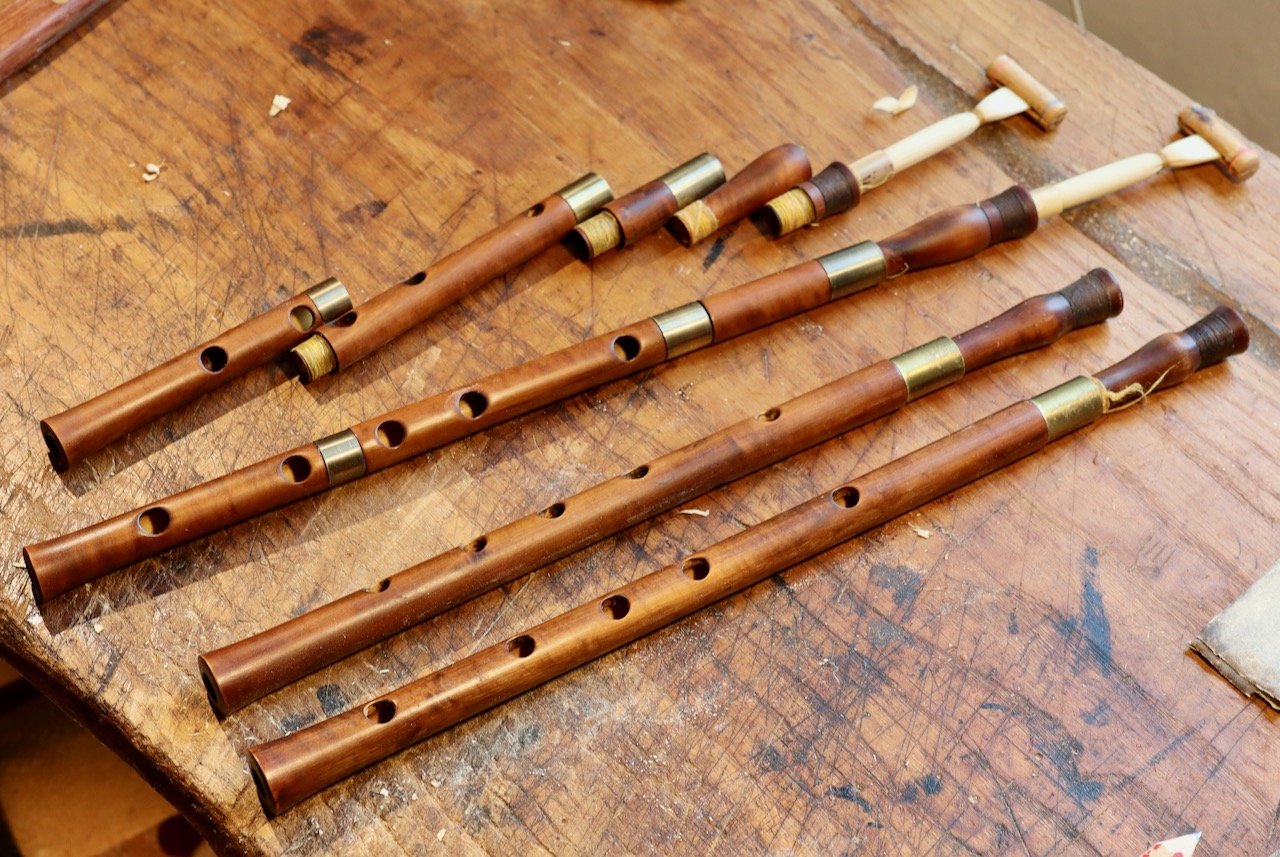
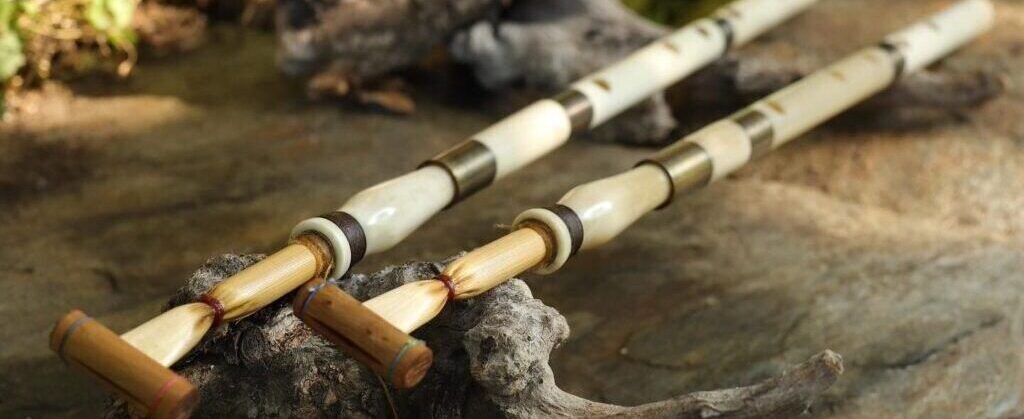
The Pydna Aulos made from deer bones. For this I use the Metatarse.
A series of tutorials by Callum Armstrong and Max Brumberg
Passe Moi les Jumelles - Aulos le Son du Roseau
In 2022, Jochen Bechler and his team accompanied me and created this documentary for Radio Television Suisse.
Robin Howell gave me advice on many occasions and I owe a lot of my knowledge of reed construction to him. Callum Armstrong inspired me a lot and always encouraged and accompanied me. The measurements and research from the original by Dr. Stefan Hagel helped me a lot to develop these models. Thanks to the work of Stelios Psaroudakes, I was able to deepen my knowledge of the Aulos, especially the Pydna Aulos.
